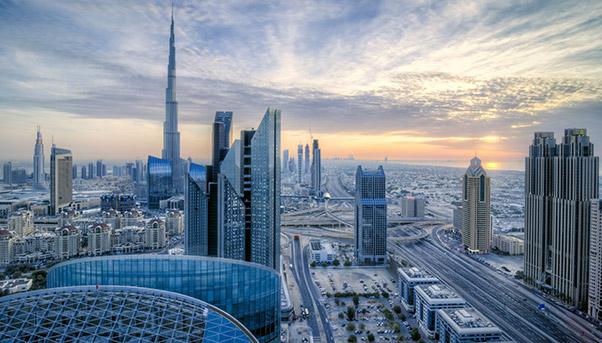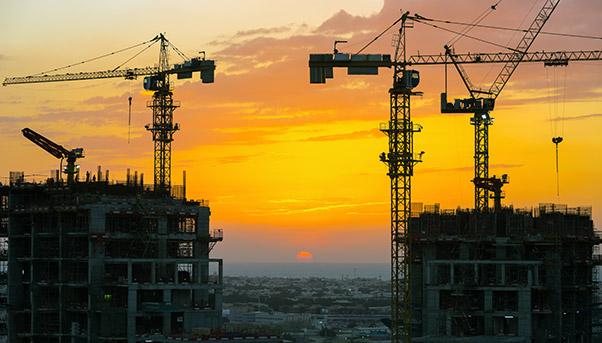
Through
the hot afternoon mist of the Saudi desert — a blend of heat, sand and
humidity — the panorama opens out over a vast yellow basin, crossed by
giant electricity poles. Burj Khalifa, the tallest building in Dubai
and in the entire world, is just a few minutes away by car, with its
sleek design; but this piece of land looks like it is in middle of
nowhere in the desert.
It is difficult, today, to imagine that this is the site of the world
biggest retail project: Meydan One will be the biggest shopping mall on
Earth in terms of size. To give an idea, it will hold a 1.5 km indoor
ski slope, the longest artificial ski run in the world; 3 towers, one of
which will be higher than the Burj Khalifa itself, and even an
artificial marina to reach the place by boat from the sea.
It’s even harder to imagine that the deadline for the opening is December 2019, just before the Dubai Expo 2020 grand opening.
But that is what’s happening here. Salini Impregilo is building the
foundations in an endless back and forth of cement trucks: 50 vehicles
bringing the concrete to the excavation site. So much is needed that
builders have chosen to set up a proprietary cement factory inside the
worksite instead of bringing concrete from outside. An astonishing 1
million cubic meters of concrete will be required to build the
gargantuan 250,000 square meters shopping mall.
The mall of wonders
At this stage, Salini Impregilo’s project is at the foundations level. Worth $435 million, never before has a civil engineering project reached these dimensions. The numbers are truly impressive: 150,000 tons of steel will be used to hold 6,000 pillars and 3,000 columns, as explained by engineers at the worksite. The entire building surrounding the shopping center will cost over $1.5 billion. This does not include roadworks (adding another $200 million) and all the related infrastructure, such as the marina. Some 7,000 workers are being currently employed: «That is the same amount of people involved in building a dam», explains Ivano Miscoli, CFO of the Salini Impregilo Dubai office, just to give an idea of the giant project.
Full speed ahead towards Expo 2020
Meydan One is only the first of an unprecedented list of Expo 2020 mega projects in Dubai, a city where mega projects are business as usual. Dubai has experienced an unprecedented infrastructure boom in the past 20 years. But this is nothing compared to what is in store for the Expo 2020 event. The downtown Dubai skyline will be redesigned by the Museum of Future. This bean-shaped building, very reminiscent of the Anish Kapoor Bean in Chicago, only much more bigger, will be home to the most advanced museum in the world displaying all of mankind’s progress in science and technology.

Dubai construction site
This $200 million project is already considered to be one of the most complex buildings ever built in the world: The museum’s remarkable rounded facade is a perfectly smooth, joint-free assembly of 890 unique stainless steel-and-fiberglass-fused panels fabricated using methods borrowed from the aviation industry. The museum’s interior features a freestanding, double-helix staircase which will resemble DNA chain.
Expo Dubai: men at work
Of course the biggest ongoing project is the Expo Dubai site itself:
located miles away from the city, it is at the moment unreachable and
off limits to everybody. Figures from government officials and event
website report a $3 billion investment to build the place.
The main square, inspired by Expo Milano 2015’s Cardo and Decumano,
will be covered by a hanging ceiling especially designed by the Italian
facade developer Cimolai. In addition to Expo Dubai site, a galaxy of
side projects are under way, revolving around public transportation. The
Red Metro Line will be extended to the Expo site.
The 15 km extension will start at Nakheel Harbour & Tower on the
existing Red Line, then run on 11.8 km of mono-rail viaduct with
stations serving The Gardens, Discovery Gardens and Al Furjan. A 3.2 km
underground section will continue to the stations at Jumeirah Golf
Estates and Dubai Investment Park would, before the terminus at Expo
2020 site, according to Dubai Roads and Transport Authority, or RTA.
Once completed, the new Red Line will have a capacity of 46,000
passengers per hour. At full capacity, by 2030, 275,000 people each day
will ride the Red Line, which will connect to the new Al Maktoum airport
by then. RTA expects 35,000 passengers to ride to the Expo station each
weekday and 47,000 at weekends: 20% of the total estimated Expo 2020
visitors will arrive by train. RTA’s strategy aims to increase public transportation usage from 15.3% to 20% by 2020. Dubai is expecting to have a 421 kilometre metro network
and 197 stations by the end of 2030, according to RTA figures. A urban
transport network that will be the envy of the world’s capital cities.

